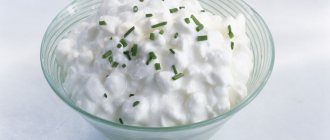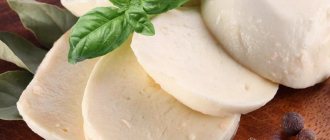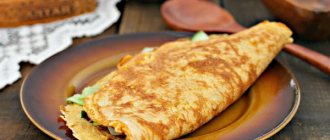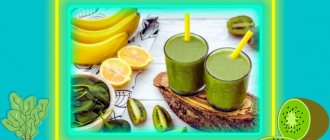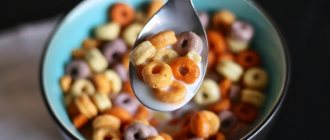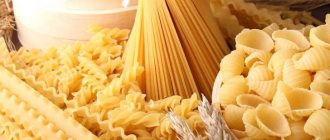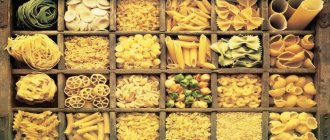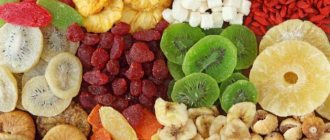“A meal without cheese is like a one-eyed beauty,” said the unsurpassed French culinary specialist Jean Anthelme Brillat-Savarin, and he was somewhat right. We are all accustomed to this product: for breakfast it is the basis of a tasty and nutritious sandwich, at lunch it makes an excellent cream soup, and in the evening what else, if not it, to snack on exquisite red wine?
But the time comes to get rid of extra pounds, and everyone begins to ask nutritionists with longing and hope in their voices, is it possible to eat cheese while losing weight - well, at least a little? The question is justified, because the calorie content in this product is simply off the charts and amounts to 300-400 kcal per 100 g. This is clearly a non-dietary indicator. However, a loophole can be found.
Is it possible?
Many people hesitate to eat cheese while losing weight. For different reasons:
- high-calorie;
- does not apply to vegan cuisine
- contains a lot of fat;
- Expensive;
- is not the basis of mono-diets;
- in a number of diets it is included in the list of prohibited foods.
Calorie content plays a decisive role, but it is precisely this that turns out to be the easiest problem to solve. Cheese can be eaten as part of most diets, because it does not interfere with weight loss because:
- at one time you are unlikely to eat more than 1-2 pieces, the weight of which does not exceed 20-30 g, respectively, it will be only 60-80 kcal;
- Those on a vegan diet can enjoy tofu;
- There are varieties with a low percentage of fat;
- the same tofu is not so expensive;
- there is no cheese mono-diet, because this product cannot provide the body with all the necessary substances;
- prohibited only in certain diets: vegan, raw food, low-fat, vegetable. And allowed in all others.
And one more huge plus in favor of cheese as a dietary product: almost all its varieties have a low GI. For comparison:
- tofu = 14 units;
- cheese = 0 units;
- suluguni = 0 units;
- cottage cheese = 29 units;
- durum varieties = 0 units.
We conclude: when losing weight, you can eat low-calorie cheese, rich in proteins and low in fat, observing the daily norm. This will not harm your figure, will allow you to diversify your diet and improve your health.
Did you know that... the French consider a day when they have not tasted a piece of cheese to be a wasted day?
List of low-fat cheeses
Low-fat cheeses are made from skim milk. That is, the cream is first skimmed from the milk, then the cheese is made.
But it will be difficult to call it completely low-fat, because the percentage of fat content will still be present, but in different percentages:
- low-fat - fat content less than 15%;
- light - fat content 15-40%;
- normal - fat content 40-60%;
Low-fat cheese is almost as good as fatty varieties in terms of taste and beneficial properties. And in some respects it even surpasses them.
Here are some of them:
- The well-known soy cheese Tofu has a fat content of 2-4%;
- Granular cottage cheese contains no more than 5% fat content;
- Riccotta cheese has only 9%;
- Smoked Chechil cheese – fat content 10%;
- Mozzarella cheese contains no more than 15% fat;
- Viola Polar cheese has a fat content of 16%;
- Regular Chechil cheese contains 18% fat content;
- Feta cheese Arla Apetina has a fat content of no more than 20%;
- Cheese Arla Apetina Light -25%;
- Galbani Mozzarella Light cheese—fat content 30%;
- Salad cheese Favita – fat content 30%;
- Chevrefin cheese - fat content 40%;
- Kaserei Champignon cheese – fat content 15%;
- Gaudette cheese - its fat content is only 12%.
Hard cheeses
Hard cheeses are most widespread, these include: Romano, Emmental, Raclette, Grano Padano, Leiden, Gruyere, Parmesan, Pecorino, Maasdam, Frisien, etc. Hard cheeses contain lecithin, which affects the proper metabolism of fats.
Lecithin is part of the structure of cell membranes, is responsible for their permeability, normalizes cholesterol levels, and stimulates the work of enzymes to break down fats.
Cheese production is a long process. And ripening takes up to 3 months or more.
Cheese features:
- Swiss - 45% fat mass, matures in 5-6 months. It is cylindrical in shape and has small eyes in cross section. Sweetish taste, pleasant aftertaste. The most famous: Moscow, Altai, Swiss, Soviet.
- The Parmesan type is very famous and loved by everyone. Its structure is slightly crumbly and breaks easily. Ripens for at least six months. Its taste and aftertaste are refined and unforgettable for a long time.
- Dutch - small eyes when cut, color from bright yellow to dark yellow. Salty taste and delicate slightly sour aftertaste. Popular types: Kostroma, Dutch.
- Cheddar type - the head is round, slightly flattened on the sides. With a soft consistency, there are no eyes when cut. It has a salty taste, a little sugary.
- Russian - cylindrical in shape, pleasant consistency. Creamy, sweetish taste, very pleasant. The most revered is Russian.
- Smoked type - they have a well-defined smoked taste, a brown rind, and a yellow color when cut. Popular: Gouda, Gruyère, Cheddar.
Soft cheeses
Soft cheeses have a pasty consistency and a milky or creamy taste.
It is produced from cow's milk and bacterial ferment, classified:
- with maturation;
- without ripening.
Most popular:
- Dorogobuzhsky - the crust is covered with mucus, transparent in color. It has a spicy-sharp taste, very pronounced, without eyes. Known types: Dorozhny, Dorogobuzhsky, Kalininsky.
- Like Camembert - a head of cheese is covered with white mold. Main type: Russian Camembert.
- Smolensky type - heads no more than 2 kg, mucus spots are clearly visible on the crust. There is no need to remove mucus before eating. Its representatives: Hunting, Snack.
The healthiest cheese is homemade. This is a good alternative to the store, because you can buy stale and low-quality products there. And at home you can always control the process.
Benefit
If you regularly include cheese in your diet while losing weight, it will have the most positive effect on your health, as it has a number of beneficial properties:
- improves digestion;
- is a source of potassium, calcium and proteins;
- normalizes blood circulation;
- increases performance, gives a boost of vigor and energy;
- activates cellular respiration;
- relieves insomnia;
- has a calming effect on the nervous system, helping to cope with stress, thereby reducing the production of cortisol, which promotes fat deposition and stimulates appetite;
- normalizes the processes of growth and development in childhood and adolescence;
- increases erectile capabilities in men;
- Promotes visual acuity and prevents eye diseases.
It is not surprising that it has such a complex effect on the body. After all, it is a storehouse of easily digestible proteins, milk fat, amino acids, mineral salts, water- and fat-soluble vitamins (A, B1, B5, B12, C, E, D, PP).
The lightest cheeses
We list those cheeses that have the lowest fat and calorie levels.
Tofu
Low-calorie cheese with a nutritional value of 73 kcal and a fat content of 4%. It is made from soy milk and has a dense consistency and neutral taste. Applies to vegetarian products.
Nutritionists recommend tofu for maintaining bone mass in older adults. Vegetable protein cheese helps prevent osteoporosis. It helps normalize cholesterol levels.
Gaudette
Dietary cheese with a calorie content of 190 kcal and a fat content of 7%. Has an increased concentration of calcium.
Ricotta
Its calorie content is 172 kcal with fat content from 2 to 24%. This is a traditional Italian cheese that is similar in appearance to pasta. Made from whey, not milk, and does not contain salt. Includes valuable methionine, which helps protect liver function.
Kinds
According to production method
- Fresh is cottage cheese, which in many countries is considered a cheese product.
- Soft - has a crust made of mold: with a washed crust (it is treated with alcohol) and fluffy (with mold).
- Semi-hard and hard: boiled (Parmesan, mozzarella) and uncooked (Gouda, cheddar).
- Brine: feta cheese, suluguni, feta.
- Blue - with mold (Roquefort).
- Fused: orbit, viola, friendship, amber.
- Smoked: sausage, braid.
Based on this classification, it is recommended to eat fresh and hard cheeses when losing weight. Those with mold are expensive and require getting used to their smell and taste. Despite the low calorie content of pickled varieties, they contain too much salt, which disrupts the body's water balance and promotes the formation of edema, which is unacceptable when losing weight. Processed cheese contains too many additives, dyes and flavors, so you should be careful with them. It is also not recommended to use smoked ones, since this method of preparing products is prohibited both in diets and in proper nutrition.
By raw materials
- Cow: more than 85% of varieties.
- Goat: chevroux, manchego.
- Sheep: feta cheese.
- Kobyliy: kurt.
- Mixed: feta (sheep + goat milk).
The healthiest one comes from goat's milk, but it is far from dietary, as it contains a large amount of fat. Sheep and mares are difficult to obtain. Therefore, all that remains to lose weight is cow fat.
By fat content
- Dietary (10%).
- A quarter fat (20%).
- Bold (30%).
- Three quarters fat (40%).
- Bold (45%).
- Very fatty (50%).
- Creamy (60%).
- Maximum creamy (85%).
Many varieties have a similar gradation. Therefore, it is important to carefully study the packaging and buy cheese with no more than 40% fat content. The best option is lean.
By type of starter
- Whey (ricotta).
- Rennet.
- Fermented milk: grated (green), curd.
Fermented milk is the most natural, made from skim milk, which is fermented using lactic acid starter. It can be safely eaten on any diet.
According to the presence of additives
- With nuts.
- With greens.
- With onion.
- With sugar.
- With mushrooms.
- With salmon.
- With chocolate.
- With ham, etc.
Want to lose weight without giving up cheese? Then it’s better not to buy it with additional flavors: to extend its shelf life, manufacturers add a lot of preservatives to the product.
It is a fact. Until now, no one can calculate how many varieties of cheese are produced in the world today. The largest review of this product was made by André Simon, a French cheese maker. His treatise “On the Cheese Business” mentions 839 types; he wrote it over 17 years.
Useful tips
Be that as it may, homemade cheeses are in many ways healthier than store-bought ones. Especially if you don’t know what components were used to create it and how long it has been stored.
But when preparing this dietary delicacy in your home kitchen, you should remember some recommendations:
- Please note that the main rule in making homemade low-fat cheese is the choice of high-quality and fresh ingredients.
- If you make cheese yourself, you can diversify the recipe by adding herbs, spices, garlic, and so on.
- When you prepare cheese, in addition to it, you also get whey, which can later be used to make pies, cold soups, and pancakes.
- The mold does not need to be greased with oil. In this case, in order to easily separate the finished cheese from the surface, you can use cling film: it needs to cover the entire surface of the mold.
- Don't be afraid if the cheese base turns a little yellow in the final steps when you add the eggs, salt and baking soda. This occurs due to interaction with soda.
Even if you are on a diet and trying to get rid of extra pounds, you cannot completely give up cheeses, since they contain many useful substances that contribute to the normal functioning of the body.
In this case, low-fat cheeses with a minimum of fat and a maximum of useful components will be your helpers.
The recipe is easy to prepare, but very similar to real store-bought hard cheese: homemade low-fat hard cheese, which you can eat according to the Dukan diet on Attack, Alternation and Consolidation, learn from the video.
Calorie content
Since to lose weight you need to choose the lowest-calorie cheeses, this table will show you in comparison which of them are dietary and which are better not to abuse.
Calorie content in the table is presented in ascending order, i.e. the lowest calorie varieties are in the first positions.
Low calorie
High calorie
According to this table, the leaders are:
- The highest calorie is Mascarpone, the lowest calorie is Tofu.
- The highest protein content is Parmesan, the lowest protein content is Mascarpone.
- The fattest is Mascarpone, the least fat is Fermented Milk.
- The most carbohydrate-rich one is Omichka.
From the world of stars. Salvador Dali's favorite cheese is Camembert.
Calorie content of low-fat cheeses
Cheese has been produced by man since ancient times; it has always been valued and loved.
Now we will find out the calorie content of the most common low-fat cheeses:
- Tofu cheese is rich in high-quality protein and can easily replace meat. Ideal for dietary nutrition. Calorie content: 100 grams contain 90 kcal.
- Ricotta cheese is made from whey. Contains the most valuable amino acid - methionine, rich in vitamin A, B, calcium. Calorie content - 160 kcal per 100 g.
- Mozzarella cheese is made only from skim milk. Cheese balls are kept in a salty solution. Calorie content - 150 kcal per 100 g.
- Grainy cottage cheese or cheese - it is prepared from low-fat milk with the addition of fresh cream. There are many options for its consumption. Calorie content - 130 kcal per 100 g.
- Chechil cheese is similar in consistency to Suluguni cheese. It is made in the form of a braid and soaked in a saline solution for ripening. It is also smoked. Calorie content - 310 kcal per 100 g.
- Cheeses Fitness, Valio, Grünlander, Polar - look for them in expensive supermarkets. Calorie content - 148 kcal per 100 g.
- Feta is a dietary product. Now you can find a replacement in stores: feta light. This cheese has a fat content from 6 to 15%. Calorie content - 150 kcal per 100 g.
- Cheeses Oltermanni, Arla, Valio, Natura - they have the taste of fresh milk. Calorie content - 250 kcal per 100 g.
- Suluguni is a Georgian pickled cheese with a calorie content of 285 kcal per 100 g.
In this list of cheeses, you can now easily find “your” cheese that will satisfy you in terms of usefulness, taste and price.
Contraindications
You should refrain from this method of losing weight if you have the following conditions and factors:
- obesity
- ulcer;
- gastritis;
- tendency to edema;
- pancreatitis;
- lactose intolerance;
- cholecystitis;
- atherosclerosis;
- hypertension;
- kidney diseases;
- children under 2 years of age.
Naturally, one piece 2-3 times a week will not worsen the listed diseases. However, if you plan to include cheese in your regular diet, the presence of these diseases will prevent you from doing so.
In addition, do not forget that each variety also has its own list of contraindications. For example, those with mold are prohibited to eat during pregnancy. But tofu can be consumed by people suffering from lactase intolerance. So each case requires separate consideration and consultation with a doctor.
This is interesting. The shelf life of some varieties is very limited, and after it expires they can be poisoned. This, for example, is brie.
Dietary cheese - list
Low-fat varieties are made using conventional technology, so they are completely safe. The only difference is that the basis for them is separated milk. Their taste is practically no different, as is their mineral and vitamin composition.
The list below will tell you which products to choose for your diet. So, these will do:
- previously mentioned Tofu (fat content does not exceed 4 percent);
- cottage cheese (up to 5%);
- Riccota (9%);
- Chechil (10%);
- Gaudette (12%);
- Mozzarella (15%);
- Polar brand "Viola" (16%);
- Feta light from Arla Apetina (25%);
- light Mozzarella of the Galbani brand (here the percentage is relatively high - 30).
All the products mentioned are quite suitable for the diet table. In addition to them, other varieties may be produced in your region, so carefully examine the supermarket shelves and feel free to consume all varieties with a fat content of up to 35%.
Ways to lose weight
Fasting day
The daily dosage is no more than 200 g, i.e. approximately 40 g for each meal (2 plates/pieces). For this purpose, you can choose tofu, Fitness Cheese (semi-hard rennet), curd or Serbian cheese, as well as any hard varieties. Green tea and water are allowed. You can't eat anything else. The result is minus 1 kg. You can repeat it only once a month.
Read more about how to lose weight on a “forbidden” product as part of a fasting day in our separate review.
Cheese diet
Type: low-calorie, protein. Duration: 1 week. Results: 3-4 kg. Difficulty: medium.
Recommended for weight loss during intense training. All low-fat protein foods are allowed (chicken breast, fish, fermented milk drinks, egg whites, legumes). The main condition is to eat a slice of low-fat cheese three times a day. Nutritionists recommend mozzarella, ricotta, almetta, Philadelphia, Adyghe. It is advisable to include different varieties in your diet.
Interesting fact. The French are passionate about cheese. They consider it not only dietary due to the minimal amount of carbohydrates, but also prolonging life and giving the joy of love (an aphrodisiac).
Recipe for making low-fat cheese at home
Many people, after a trip to the store or a couple of unsuccessful purchases, think about how to make such a healthy and low-calorie product at home, where they can control all the ingredients and be assured of quality and freshness.
In fact, it’s quite simple to make cheese from low-fat cottage cheese. It will take no more than an hour to create it.
In addition, it will be much cheaper than buying other low-calorie cheese in the store. To create you will need:
- low-fat cottage cheese – 1 kg;
- a glass of milk (can be medium fat 2.5%);
- one egg;
- salt – level teaspoon;
- soda - half a teaspoon;
- butter – a small piece (about 10-15 g);
- olive oil - a teaspoon.
Also, in addition to the main components, you need to prepare kitchen utensils: you will need a saucepan with a thick bottom, a colander and a mold for the future cheese (a deep and not too wide bowl will do).
Now you can roll up your sleeves and begin the process. Pour the cottage cheese into a saucepan, then add the milk.
Turn on the stove and place the saucepan on low heat (high). Stir occasionally.
It is necessary to ensure that the cottage cheese is completely dissolved in the milk. After the liquid has boiled, cook for about 7-10 minutes and remove from heat.
We throw everything into the prepared colander, and put butter, salt, soda, egg and cottage cheese into the emptied saucepan after it has drained. Return it to the heat and mix the ingredients thoroughly.
Gradually the mass will become viscous - this is a sign that the cheese is ready.
Grease the prepared pan with olive oil, then place the mixture obtained in the pan there. Now you just need to wait until it hardens and cools, although it is also tasty warm.
Learn a simple recipe for homemade cottage cheese with herbs from the video.
Recommendations
How to choose a quality one?
Calorie content should be no more than 300 kcal per 100 g of product, fat content should not exceed 40%. The lower these indicators, the better the weight loss results will be. The composition should contain only natural ingredients: sourdough and milk, possibly adding spices. Don't forget to look at the expiration date. The wax coating must be smooth, solid, uniform in color, without blisters, damage or white deposits.
The color is milky, with a yellowish tint. The smell should not be sour or pungent. It squeaks on the teeth - it contains starch, it’s better not to buy it. A sticky consistency indicates a violation of manufacturing technology. The taste of a quality product is salty with a creamy tint.
When is the best time to eat?
The optimal time is for breakfast. According to scientific research, in the morning the stomach is able to fully absorb all the nutritional elements of cheese. For lunch, you can use it as an ingredient in a dietary dish (cream soup, julienne, vegetable salad). For dinner, you can eat a small slice, since, according to the principles of proper nutrition, the last meal should be protein. But late in the evening, at night, it is not recommended to eat it either when losing weight or with a normal diet. Proteins and fats will weigh down your stomach and slow down the digestion process.
In any form?
Exclusively fresh. A baked cheese cap and a viscous mass of creamy soup are the height of culinary sophistication, but they are of little use. During heat treatment, the protein is destroyed and the amount of fat increases. And try not to eat it cold. Cut a piece and keep at room temperature for at least half an hour.
How to store it correctly?
On the top shelf of the refrigerator for no more than a week. As soon as mold appears on it, it becomes hard, covered with a yellow crust or droplets of liquid, do not risk your health - throw it away.
With the world - one by one. The leader in production is America. The leader in consumption is Greece. The best product is made in Switzerland. The experts are the French.
Types of low-fat cheeses that you can buy in the store
Today you can find a huge number of different varieties of cheese on sale. They are produced using different technologies from goat, cow, horse, camel and sheep milk. Thanks to this, they have different tastes and smells. You need to be able to choose the right fermented milk product suitable for your diet.
Solid
If you decide to lose weight, use solid low-fat varieties of fermented milk product for your diet. Most of them have high energy value, but in small quantities they do not contribute to the accumulation of fat deposits. Hard cheeses contain lecithin, which accelerates lipid metabolism, promotes the breakdown of fats and lowers cholesterol levels. On a diet you can eat the following varieties:
- Russian. It has the shape of a cylinder, yellow color, slightly sweetish creamy taste. By consistency it belongs to semi-solid low-fat varieties. Its calorie content is about 360 kcal/100 g, fat content is 50%. Often used for preparing snacks, pizza, roasting meat, fish, vegetables, etc.
- Swiss. It has the shape of a low cylinder, white or light yellow color, a pronounced aroma and a sweetish, slightly spicy taste. In the thickness of Swiss cheese there are oval or round eyes. The fat content of the product is 45%, calorie content is 380 kcal/100 g. This variety is often used for preparing soups, batters, casseroles, pies, and sandwiches.
- Parmesan is a low-fat diet cheese with a brittle, crumbly structure, a specific smell, delicate taste and a spicy aftertaste. It is consumed as an independent dish, added to soups, salads, and pizza. Parmesan is delicious paired with balsamic vinegar. Contains 32% fat, 292 kcal/100g.
- Cheddar (33% fat, 380 kcal/100g). It has a plastic consistency, yellowish color, nutty taste with a slight sour taste. It is considered beneficial due to the protein, calcium, phosphorus, amino acids, vitamins and minerals it contains. Low-fat Cheddar cheese is used to prepare toasts, salads, soups, sauces and fondues.
- Dutch. It has a milky taste with a slight sweetish or, conversely, sourish (depending on aging) taste, white or pale yellow color, dense structure with eyes of different shapes. Dutch low-fat cheeses go harmoniously with apples, grapes, and white wine. Fat content – 45%, kilocalories – 345/100 g. Can be consumed in small quantities during a diet.
- Gaudette. Semi-solid, low-fat, allowed during a diet. Contains 199 kcal/100 g and a lot of calcium, the proportion of fat is 7%. It has a mild piquant taste and is used for preparing appetizers, hot first and second courses.
Soft
Nutritionists also recommend using soft, low-fat cheese for your diet. The most popular varieties are:
- Oltermani (fat content 5-10%, 270 kcal/100 g). It has a milky taste and a sweet and sour aftertaste with a slight bitterness, a uniform texture with holes of almost the same size. Thanks to its delicate taste, minimal amount of salt and unobtrusive aroma, Oltermani is used for preparing sandwiches, salads, first and second courses, and fruit salads.
- Chechil is a fibrous, low-fat cheese variety suitable for diets. It is made in the form of threads collected in a bundle or tied with a rope, braid, or ball. Often sold smoked, it has a pungent flavor and is white or light yellow in color. Contains 5-10% fat, 253-313 kcal/100 g and a lot of salt. Used for making salads, pizza, pies.
- Fitness Viola Polar (5-10% fat, 250 kcal/100 g) is a low-fat fermented milk product that is popular among those on a diet. Often it contains yogurt instead of fat, making it even more beneficial for weight loss. It has a rich milky taste with the taste of additives that are often present in it: mushroom, chocolate, ham. Sandwiches and salads are prepared with Fitness Viola Polar.
- Low-fat Mozzarella cheese contains protein, phosphorus, calcium and fatty acids. Its fat content ranges from 17 to 24%, calorie content - 149-240 kcal/100 g. It is sold in the form of white balls in a salty solution and has a milky taste. Mozzarella is combined with pepper, basil, tomatoes, olive oil.
- Ricotta is a low-fat cheese made not from milk, but from whey without adding salt. Its fat content is 9-18%, calorie content is 174 kcal/100 g. The consistency of the product is loose with a sweetish aftertaste. Ricotta goes well with broccoli, fruit, salmon, basil, ham, and pasta.
- Feta. It is prepared from sheep's milk and has a fat content of 60% (290 kcal/100 g), but it can also be dietary, containing 30% fat, if goat's milk is used for its production. The second version of Greek cheese is suitable for diet. The color of Feta is white or cream, the texture is loose, the smell is curd. The taste depends on the variety and can be mild, creamy, salty or spicy. Combines with vegetables, herbs, vegetables, seasonings, and is often used to make salads.
- Tofu (1.5-4% fat, 73 kcal/100 g) – low-fat, made from soy milk. The consistency is similar to feta cheese, contains a lot of calcium and protein, which helps strengthen the spine and prevent osteoporosis. Salads and miso soup are prepared with Tofu; in itself it has a neutral taste, but perfectly complements the taste of other products in dishes.
- Adygei is a low-fat soft fermented milk product with a delicate texture and fermented milk taste. Contains 14% fat, 240 kcal/100 g. It contains no carbohydrates, so the product is recommended for use during a diet. Adyghe cheese is used as a filling for khachapuri.
- Curd cottage cheese (5% fat, 105 kcal/100 g) – a mixture of salty cream and curd grains. It has a delicate creamy texture, if its fat content does not exceed 5%, it can be consumed even during the most strict diet. It is often added to omelets, salads, and consumed as an independent dish.
- Light processed cheese is made from rennet cheeses and other dairy products using melting salts. 100 g of product contains 7.5% fat. Thanks to its creamy consistency, it is ideal for spreading on bread. It has a delicate creamy milky taste.
- Suluguni (24% fat, 285 kcal/100 g) is a classic Georgian fermented milk product. It has a slightly salty taste and a dense elastic consistency. Color – white or light yellow, can have many eyes, is used to prepare many dishes of Georgian cuisine.
Buying such cheeses in a store is not a problem now. They are, of course, difficult to find in regular grocery stores, but large supermarkets have them.
In low-fat Tofu, the fat content will range from 2-4%. It is high in protein and calcium and has healing properties. It is also called bean curd because it is made from soy milk.
This is curd cheese, the consistency and color of which resembles unsalted and low-fat feta cheese. Its taste is neutral, that is, almost absent. It goes on sale in vacuum packages in which the liquid is determined.
Differs in consistency and production method:
- solid;
- ordinary.
This cheese has many varieties, and is even made with additives: nuts, seasonings, pepper, etc.
Smoked tofu is popular, its types:
- Dense - has two varieties: Asian;
- west.
Rich in vegetable protein, contains all essential amino acids, a supplier of iron and calcium. Contains absolutely no cholesterol and is low in calories. It has spread all over the world.
Gaudette
The famous Dutch Gouda cheese now has a low-fat counterpart called Gaudette. This is the newest cheese from Scherdinger, containing only 8% fat (16% dry matter).
It has a classic soft-subtle cheese taste. It has a high calcium content and is easily and completely absorbed.
Chechil cheese has an interesting shape in the form of long threads of varying thickness. The taste is pronounced, sour milk. Fat - up to 11%.
The structure is slightly rough, layered, can be:
- braided into wreaths, or braids;
- curl up into ropes or balls.
Its varieties:
- in the usual smoked form;
- salty.
It has a wonderful milky taste and is produced:
- in plastic containers with a capacity of: 100 g, 200 g, 400 g;
- in the form of triangles;
- slicing
With fillings: ham, mushrooms, chocolate, just creamy, etc. They make salads and soups. To produce them, hard cheeses are taken, butter and other natural ingredients are added. Fat content - 5-10%.
See the calorie content of butter per 100 grams here.
Ricotta
Ricotta is an Italian delicacy dairy product. It is made from whey left over from the production of other cheeses. Different types of milk are used for whey. They can even use a mixture of milk, several types at once.
Its taste is slightly sweet, fat content:
- 9% from cow's milk;
- up to 25% from sheep's milk;
- 15% from goat's milk;
- 28% from buffalo milk.
Calorie content per 100 g - 120 kcal. Its sodium content is the lowest when compared to other cheeses. It contains an impressive composition of microelements and vitamins, especially a lot of calcium.
There is even methionine present - this is a sulfur-containing amino acid that protects the liver from adverse environmental factors.
Types of cheese:
- Ricotta Forte has excellent taste, lasts a long time, and is made only from sheep’s milk.
- Ricotta Fresca - only freshly prepared cheese is used; aging is not needed here.
- Ricotta Affumicata - made from a mixture of goat and cow's milk, there are also smoked types.
- Ricotta al Forno - prepared from a mixture of goat, buffalo, cow milk, and aged in ovens. It comes not only classic, but with different flavors: vanilla, lemon, chocolate, etc.
- Ricotta Romana - requires a lot of aging, the cheese is hard, salty taste.
Feta is a Greek semi-hard cheese made only from goat and sheep milk. Keep in a salt solution for at least 4 months. Fat content from 40 to 60%.
